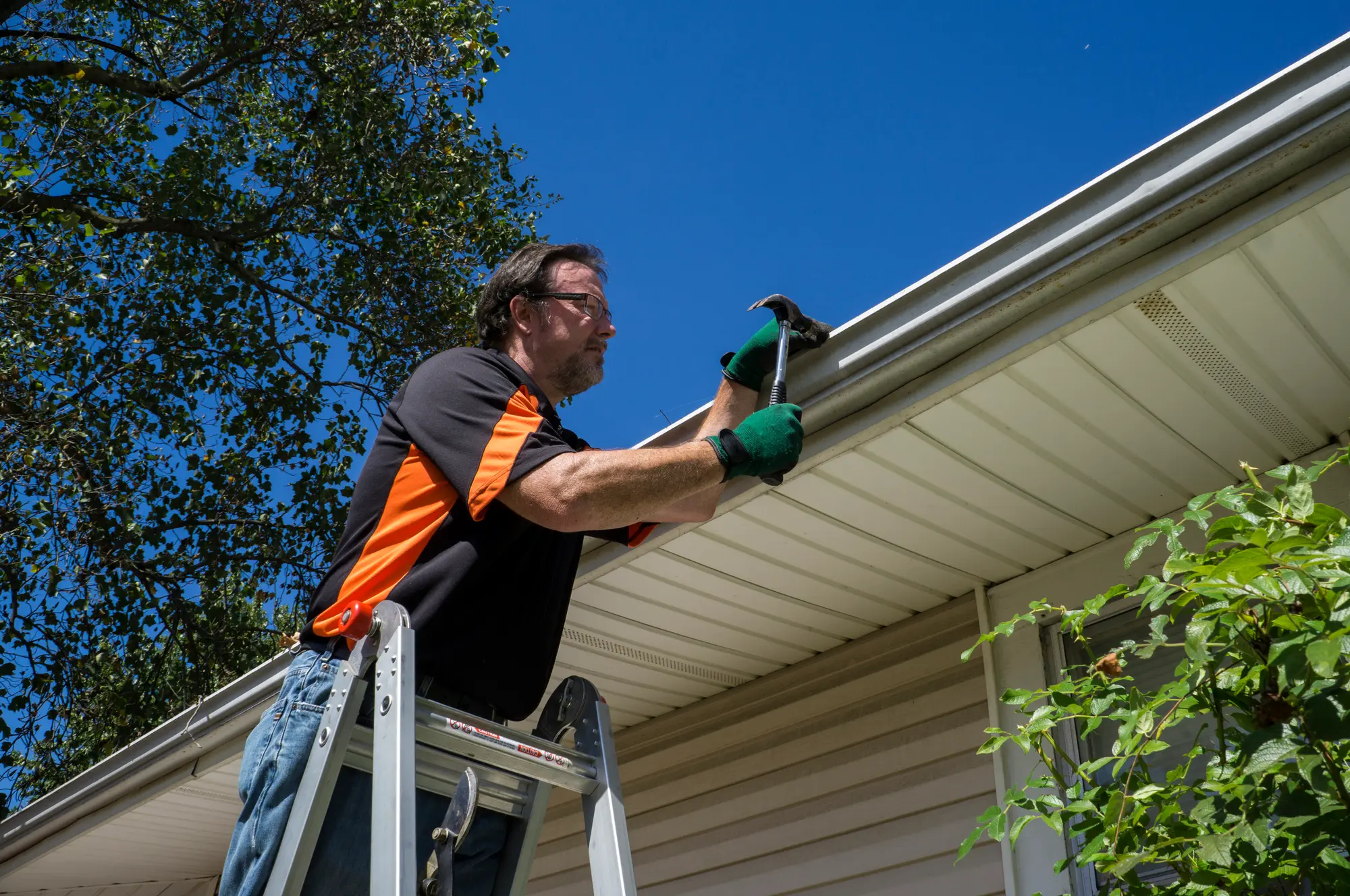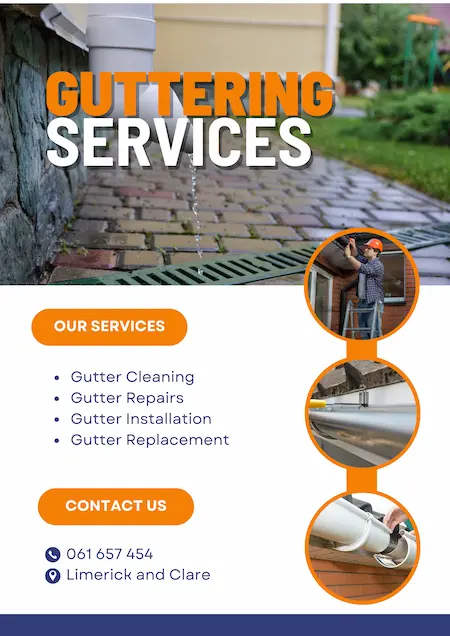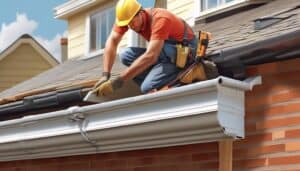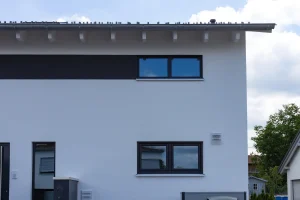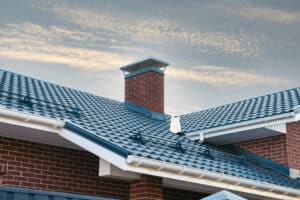Table of Contents
ToggleAre flat roof drain systems the right solution for your Limerick or Clare property? These specialised drainage solutions offer unique advantages for commercial buildings and modern homes, but come with important considerations every property owner should understand.
At Guttering Services, we install and maintain flat roof drainage systems designed for Ireland’s rainy climate.
These systems prevent water pooling that leads to leaks, structural damage, and premature roof deterioration – but require proper design, quality materials, and expert installation to function effectively.
This comprehensive guide examines the advantages and limitations of flat roof drain systems, including internal drains, scuppers, and siphonic systems.
We’ll help you determine if these solutions match your property’s needs and explain how our professional installation ensures proper water management.
Contact Guttering Services today for a free consultation on flat roof drainage options that protect your property from Ireland’s challenging weather conditions.
Key Takeaways
- Flat roof drain systems are crucial for effectively managing water on flat or low-slope roofs. They prevent water pooling and potential leaks, thus maintaining the integrity and longevity of your roof.
- While flat roof drain systems are beneficial for water management, they do require regular maintenance to avoid clogs and blockages.
- Flat roof drain systems can be customized to suit specific building needs, offering flexibility in design and function. However, design options may be limited, and visible parts of the system might affect the building’s aesthetic appeal. It’s essential to balance functional requirements with the desired look of your property.
- Due to the complexity and importance of proper installation, it’s recommended to engage professional services for setting up a flat roof drain system.
What Are the Pros of Flat Roof Drain Systems?
If you’re looking for an effective solution to manage water drainage on your flat or low-slope roof, flat roof drain systems are a great choice. Here are some of their key advantages:
- Prevention of Water Pooling: One of the major upsides of a solid drainage system on a flat roof is that it stops water from pooling and causing leaks. When water piles up on a flat roof, it can mess with the structure, pile on extra weight, and create a risk for leaks. An efficient drain system gets rid of roof water, stopping any accumulation and lowering the chances of leaks.
- Ease of Maintenance: Flat roof drain systems are not hard to maintain and clean. If you regularly check and clean the drains, you can keep them clear of debris, stopping any blockages that could slow down the water flow. This not only keeps the drainage system working at its best but also helps it last longer.
- Longevity and Durability: Properly installed and maintained flat roof drain systems can significantly extend the lifespan of your roof by preventing water damage. This is a major benefit for both residential and commercial properties.
What Are the Cons of Flat Roof Drain Systems?
While flat roof drain systems have their upsides, it’s just as important to be aware of some of their downsides. These can affect how well your system works and how long it lasts:
- Risk of Clogs and Blockages: With flat roof drain systems, there’s always the chance that they might get clogged or blocked. If that happens, water might end up pooling on your roof and causing leaks. So, it’s crucial to frequently check on your drains and keep them clean. You might also want to consider installing leaf guards or screens to keep debris from getting into your drains.
- High Initial Installation Cost: While it might cost quite a bit to install a flat roof drain system, it’s an investment that could save you money later down the line. Yes, you’ll need to carefully plan out the installation process and hire professionals to install it. But doing so can help you avoid expensive repairs and replacements in the future.
- Limited Design Options: Flat roof drain systems aren’t exactly known for their design versatility. They’re usually installed right on the roof surface, which could disrupt the sleek look of a flat roof. That said, some manufacturers do offer decorative drain covers to spruce up the appearance of your roof.
What Are The Factors To Consider For Flat Roof Drain Systems?
When evaluating flat roof drain systems, consider the following factors to ensure they meet your needs:
Cost
Think about not just the initial installation cost, but also the potential issues that could come up later. Flat roof drain systems might need extra components like sumps or catch basins, which could push up the overall cost. And then there’s the possibility of the system getting clogged or blocked. If that happens, you’re likely going to need professional help to fix it, which could mean more expenses for you.
Maintenance
Flat roof drain systems need regular check-ups to make sure they’re working the way they should. This involves looking for blockages, debris, or damage that might stop the water from flowing properly. Keeping up with the maintenance can help you avoid issues like leaks and water pooling, which, if ignored, could lead to expensive repairs.
Professional Installation
Due to the complexity and importance of proper installation, it’s recommended to engage professional services for setting up a flat roof drain system. Hiring an expert ensures that the system is installed correctly, helping to prevent future problems and minimise maintenance costs.
Aesthetics
If you’re someone who cares about aesthetics, the visible parts of the system might not be to your taste. Flat roof drain systems aren’t exactly known for their design versatility. They’re usually installed right on the roof surface, which could disrupt the sleek look of a flat roof. Some manufacturers do offer decorative drain covers to spruce up the appearance of your roof, but options may be limited.
By weighing these factors, you can make a more informed decision about whether a flat roof drain system is the right choice for you.
How Much Does It Cost to Maintain Flat Roof Drain Systems?
The initial cost of setting up a flat roof drain system can vary based on the intricacy of the system and the specific needs of your building. The cost of flat roof drain system maintenance also varies depending on the size and complexity of the system.
Additionally, hiring a professional for the installation is usually recommended due to the complexity of these systems. It is always advisable to consult a professional roofing contractor to get a precise quote for the installation.
With a professional installation, you can be confident that the system will be installed correctly, minimising future problems and maintenance costs.
Is a Flat Roof Drain System Right for You?
First off, you’ve got to look at the price tag. Sure, there’s an upfront cost with installing a flat roof drain system, but the long-haul advantages just might tip the scales.
Think of it this way: these systems are like your roof’s own personal water slide, directing water away and avoiding any unwanted pools or possible leaks. That means fewer expensive repairs down the line. Plus, they’re pretty low-maintenance and easy to clean, which is a bonus if you’ve got a flat or low-slope roof.
Of course, you’ll need to keep an eye on it to make sure it’s doing its job properly. Regular inspections and maintenance are the key to catching any potential issues before they blow up into bigger problems.
What’s great about flat roof drain systems is that they can be tailored to suit individual needs, giving you a lot of flexibility with design and functionality.
Frequently Asked Questions
For a flat roof, you want a drainage system that’s top-grade. It should take advantage of a design that’s got a bit of an incline to it. It’s all about managing water flow effectively while avoiding issues like water collecting in one place or leaks forming. Plus, it makes it a breeze to keep clean and maintain. So, you’re not just getting a reliable drainage system, but one that’s user-friendly too.
Flat roofs can surely be a bit of a headache. First off, they need constant attention. You have to keep an eye on them, checking up on them regularly, and making sure water is draining correctly. Plus, it can be a real pain trying to find ways to insulate them to save on energy costs. It’s not that there aren’t ways to do it; it’s just that the choices are somewhat limited compared to other types of roofs.
Start by putting in some drain covers. This helps to stop any large debris from getting in there in the first place. Make sure you clean out any debris that does make it into the drain on a regular basis.
Also, get in the habit of checking out your drain system every now and then. Look for anything that could be causing a blockage or any damage that might lead to a problem down the line.
Absolutely, a drain is a must-have for flat roofs. It’s all about preventing rainwater from pooling up and causing leaks. There are a few different types of drains you can use for flat roofs, such as scuppers, gutters, and interior drains. Each one has its own set of benefits and drawbacks, so it’s worth taking the time to decide which would work best in your situation.
